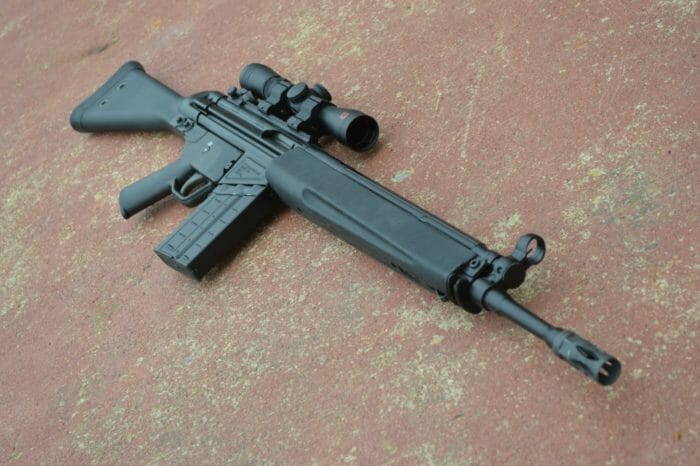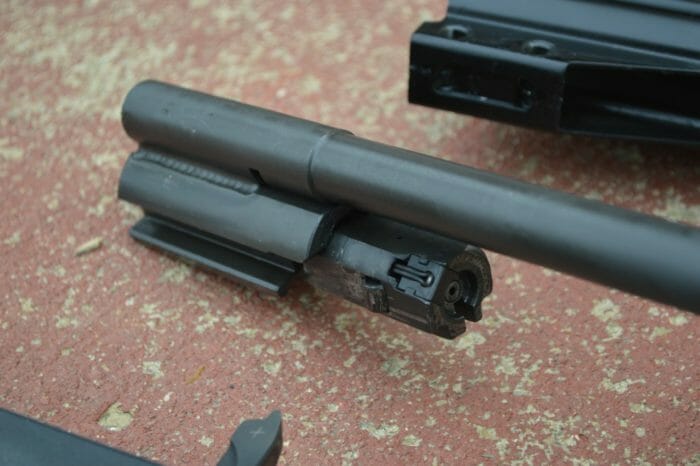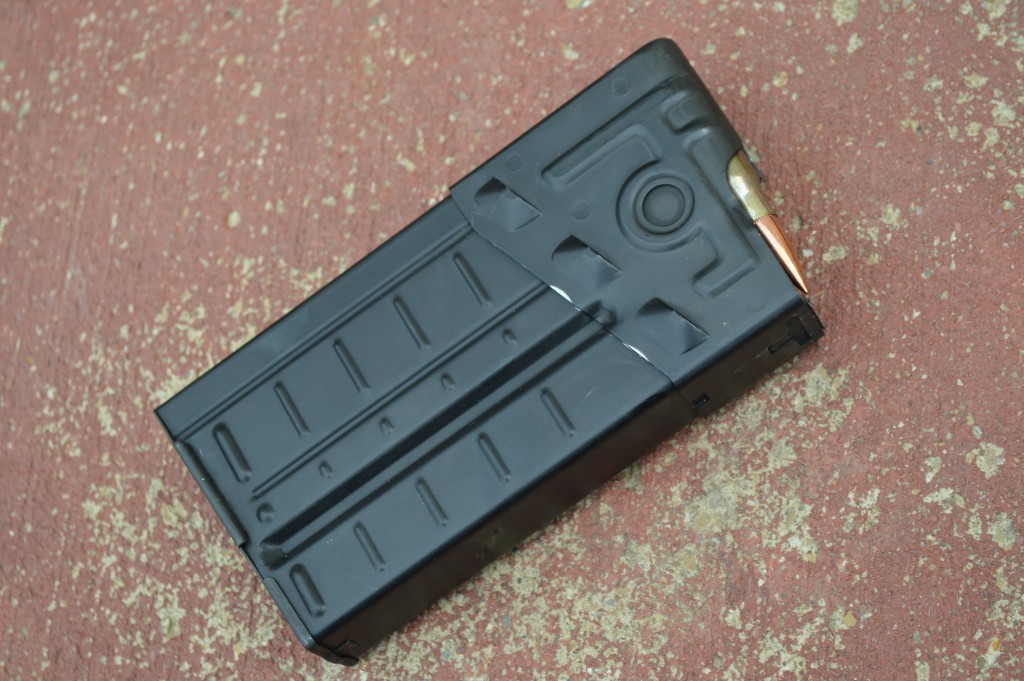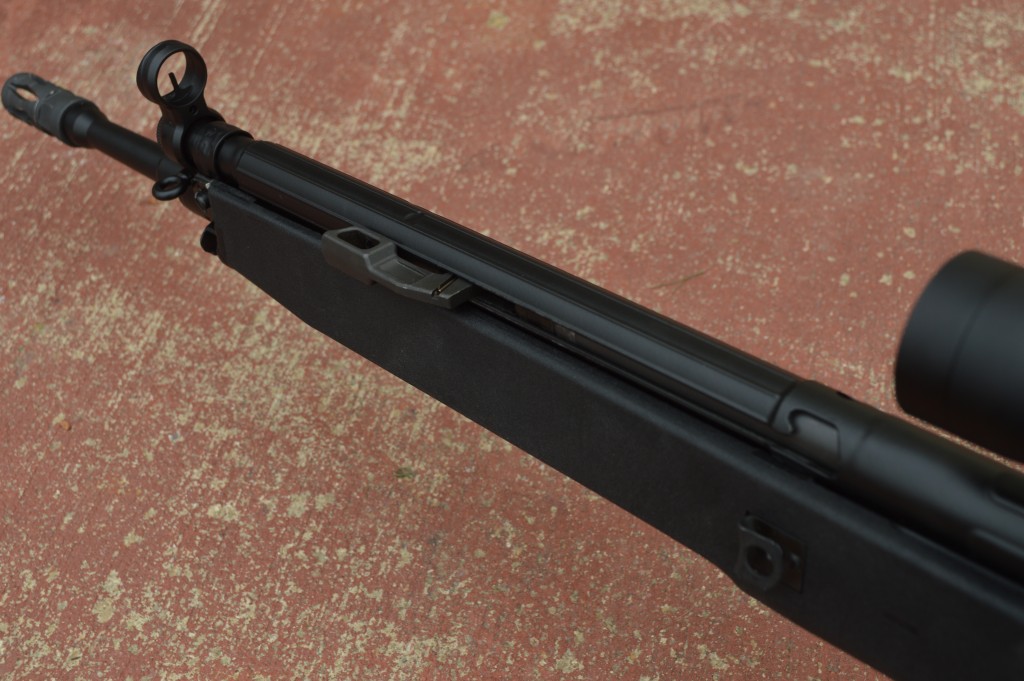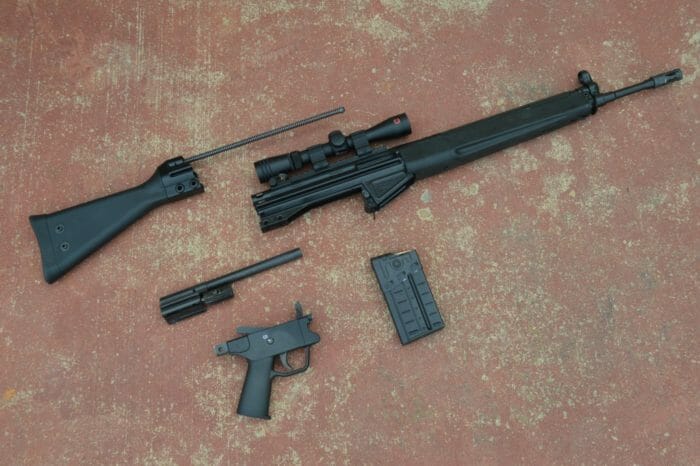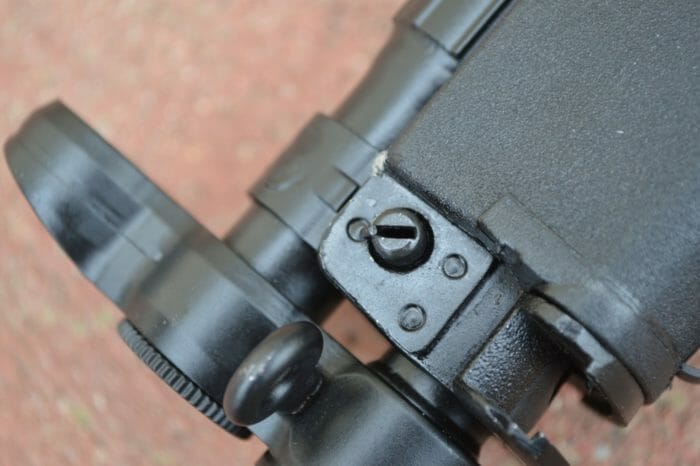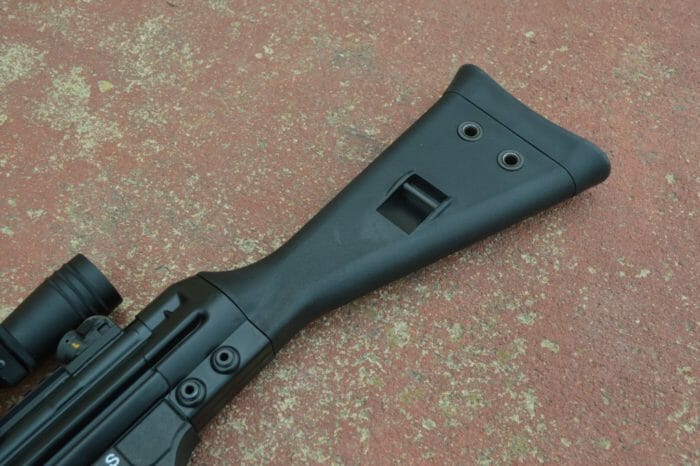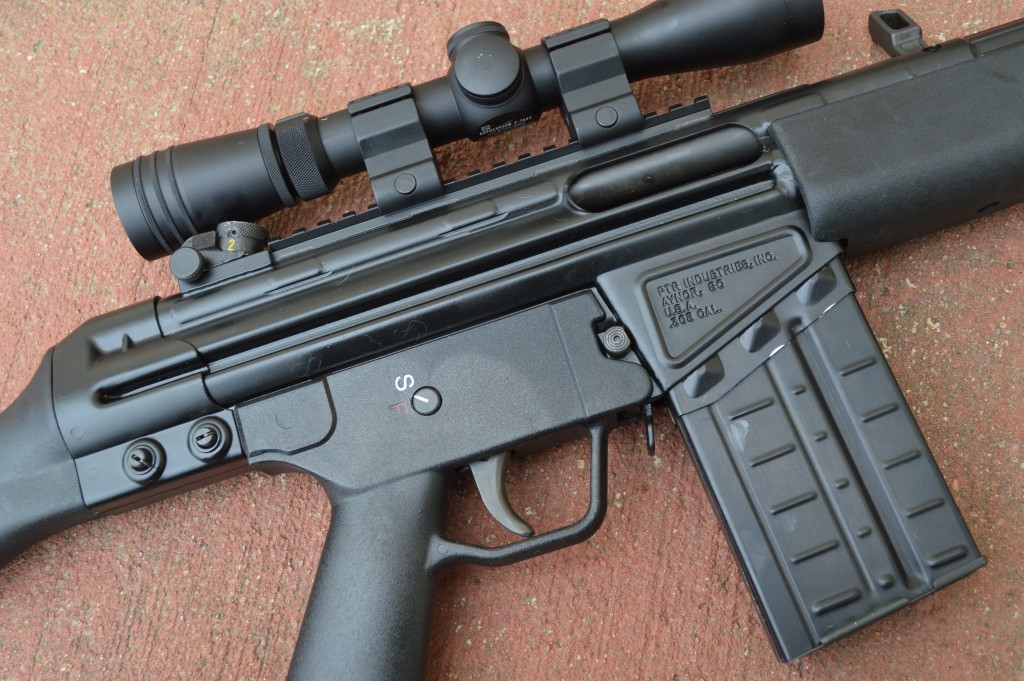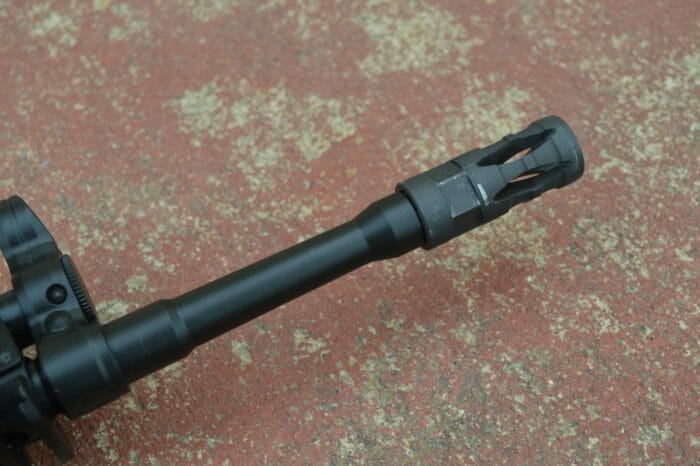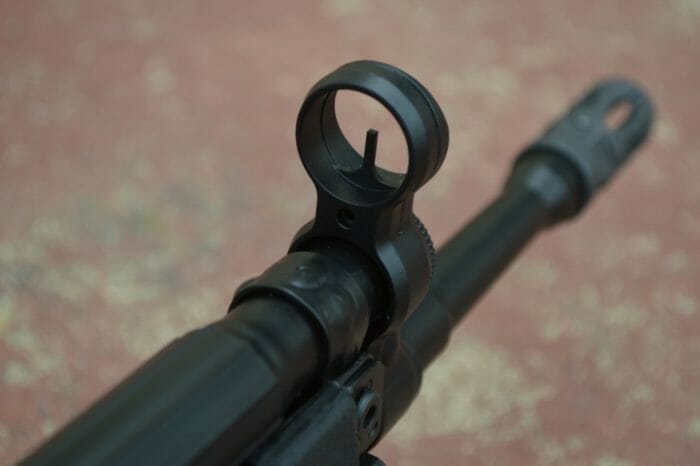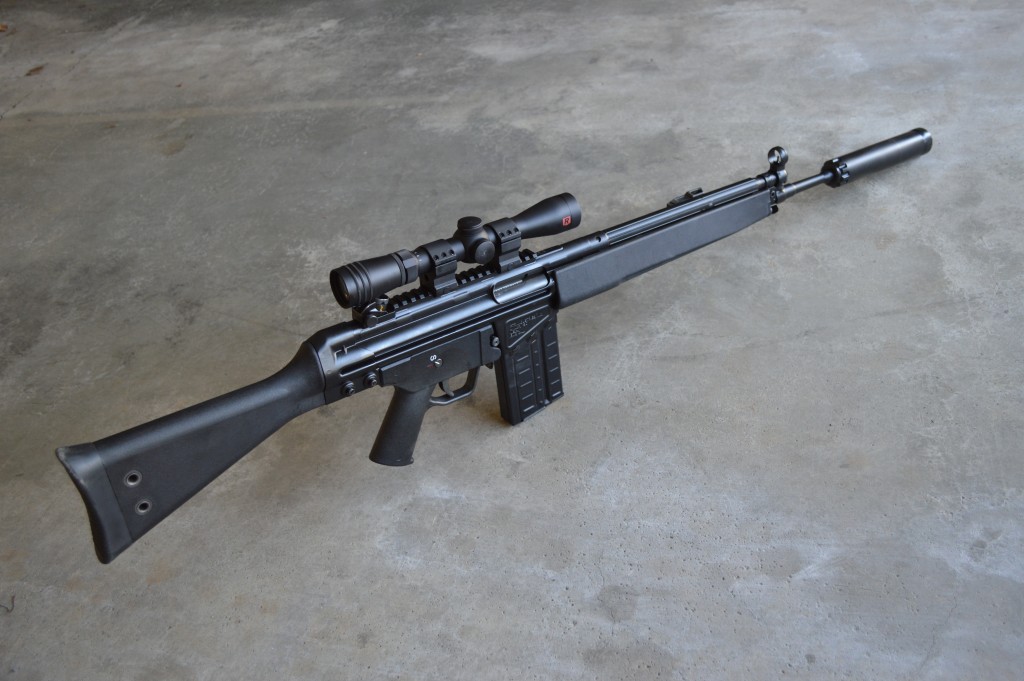PTR-91 A3R Review
I’ll admit, I’ve been a bit of a Heckler & Koch G3 fanboy since I first discovered the rifle while playing Rainbow Six 3 on my Xbox back in middle school. Something about the classic battle rifle with its full-power 7.62x51mm/.308 rounds and full 18-inch barrel seemed perfect for just about any purpose. As I grew older and began to venture into real firearms, my appreciation for the G3 remained, but my budget quite obviously couldn’t support the real deal and even a civilian HK91 was out of the question.
In order to fill the gap, I picked up one of Century Arms’ Spanish CETME builds back in 2009. As the inspiration for the G3, the CETME shares many of the same parts and for the most part, looks just like its German cousin. Unfortunately, the Century gun was problematic from the get-go and unwilling to put more money into the rifle, I sold it for a loss several months after purchase.
When I began my partnership with Silencer Shop last fall, I recognized that I needed to acquire a semi-automatic .308 of some sort for suppressor evaluation. I shopped around for several weeks, but for whatever reason kept coming back to the G3, or more accurately the US-made PTR-91 rifles sold by Atlantic Firearms. With a welded Picatinny rail for optics and suppressor-friendly 5/8×24 barrel threads, Atlantic’s exclusive PTR-91 A3R seemed especially appealing. After a quick chat with Atlantic’s owner, Blaine, I purchased the rifle and had it in hand less than a week later.
About the Rifle
Though the Heckler & Koch G3 was officially adopted by the German Bundeswehr in 1959, its story began almost 15 years earlier. During the late stages of World War Two, engineers at Mauser were tasked with developing a replacement for the expensive, complicated StG 44. With both fronts of the war closing in on Germany, resources were at an ever-increasing premium and the StG 44 simply could not be produced in the numbers needed. These efforts ultimately led to the development of the StG 45(M), which not only cost much less than the StG 44, but also miniaturized (a variation of) the MG42’s roller-locking system for use in standard infantry rifles.
The StG 45(M) never saw large-scale production during the war, but after the conflict ceased in 1945, the engineers from Mauser left the country to join CEAM in France. The group further matured their design between 1945 and 1950, but French budget constraints prevented military adoption of their rifles. In 1950, lead engineer, Ludwig Vorgrimler, left CEAM to join CETME in Spain.
With CETME, Vorgrimler helped to develop the experimental Modelo A and production Modelo B rifles. The two designs were mostly similar, but the Modelo B was chambered for both Spain’s reduced-power 7.62×51 CETME and the new 7.62×51 NATO cartridge. The Modelo B also happened to catch the eye of the new West German Army, the Bundeswehr. German officials leveraged existing ties between CETME and Mauser Werke’s successor, Heckler & Koch, to tweak the Modelo B and develop what is now called the G3.
The G3 eventually won out against the FN FAL, SIG 510, and AR-10 and was adopted by the Bundeswehr in 1959. Over the course of the next several decades, the firearm went on to serve not only in the Bundeswehr, but also in the arsenals of other nations throughout the world. Many of the eventual adopters even purchased licenses from Heckler & Koch to produce the rifles domestically, including Greece, Pakistan, Portugal, and Turkey. On the civilian side of things, the G3 became the semi-automatic HK91.
Fourteen years ago, JLD Enterprises (PTR Industries’ predecessor) purchased original G3 tooling from FMP in Portugal and began US production of an HK91 replica, the Precision Target Rifle 91 (PTR-91). Though PTR Industries now relies on modern CNC machinery to produce most of their parts, the company still owns the FMP tooling and checks their work against these originals. The PTR-91 A3R we will examine today is PTR’s remarkably authentic take on HK’s G3A3 and is available only through Atlantic Firearms.
The Build
Even more than building an AK, putting together an HK-style rifle takes considerable skill and the correct tooling. Upon receipt, I immediately noticed that the quality of the A3R greatly exceeds the old Centry CETME I owned years ago. The trunnion and cocking tube welds on PTR Industries’ rifle are all clean and unlike the CETME, the cocking tube is actually straight.
If you understand how the roller-delayed blowback system works, you probably realize that bolt gap (or the spacing between the bolt head and carrier) is crucial to safe and reliable function. In essence, proper spacing of these parts with the breech locked and hammer dropped means that the bolt’s rollers, locking piece, and barrel/trunnion are all installed properly and in good condition. As parts wear, this spacing will decrease and at some point, the barrel will need to be re-pressed to restore the gap to a safe range. According to specifications, a gap between 0.004″ and 0.020″ is considered safe. Out of the box, my PTR exhibited bolt gap measuring 0.016″ and the spacing has remained the same over my first 500 rounds.
As a wholly steel rifle, the A3R weighs just a hair under 10 pounds according to my scale. Adding a full magazine and a scope like the Redfield Revolution I have on my rifle brings the whole unit to around 12 pounds. If you’re looking for a lightweight .308, this probably isn’t it.
Of all the rifles I’ve owned, the A3R probably has the nicest finish in terms of durability. PTR first parkerizes the entire rifle and then applies a satin black powder coat that seems nearly impervious to all but the harshest abuse. There have been several instances where I’ve bumped the rifle against things at the range and even inside my safe. Each time, the powder coat shrugs off the beating.
Though PTR continues to trend toward entirely US-made rifles, the current batch of A3Rs feature a handful of foreign parts. According to PTR, the rifles presently ship with foreign handguards, charging handles, charging handle supports, magazine releases, rear sights, buffers, and back plates. Additionally, most of the trigger group parts are original military pieces. All other parts, including the stock and trigger housing/pistol grip are made in the United States.
Speaking of the magazine release, as of late 2015 all A3R rifles will ship with original paddle releases. If you’ve ever tried to use the button release on one of the older PTRs or on a CETME, you probably know that it is virtually impossible to reach without breaking your primary hand’s grip. The paddle facilitates easy magazine removal with the support hand. Previously, shooters spent over $200 retrofitting their PTRs to accept the paddle release. Now, the feature is included.
One of the unsung features of current PTR-91 GI series (including the A3R and A3S) rifles is the barrel. Sourced from Green Mountain, the 4140 chromoly steel, 18-inch tube arrives at PTR as a rifled blank. Once in house, PTR turns the barrel’s outer diameter to military G3 profile, chambers it, and adds the proper flutes to the chamber for reliable extraction. Since original HK barrels were hammer forged, some shooters are dismissive of the PTR’s button rifled pipe. Based on what I’ve seen from Green Mountain, this hasty judgement might not be so fair. In testing, their AK barrels have proven themselves every bit as hard as many European hammer forged examples and I expect the same would hold true in this case. Unlike original HK91s and past PTR-91s, current A3Rs ship with 5/8×24 threaded barrels.
An update I would like to see on PTR’s rifles is the addition of either chrome lining or nitride treatment to the barrels, both of which would protect the bore against corrosion and wear. While I’m not particularly worried about my A3R’s longevity, I do feel that there are certain things that should come standard on a $1,000, semi-automatic rifle. Among these necessary features is some form of enhanced barrel treatment.
Trigger
If there is one glaring issue with the PTR-91 (and all HK91 variants for that matter), it’s the fact that the rifle’s trigger is downright awful. No, I’m not talking mediocre/sorta-kinda bad. I mean bad-bad. According to my Lyman gauge, the A3R’s bang lever breaks at anywhere between 9.25 and 10.75 pounds. It is truly that heavy and inconsistent. Furthermore, it features around 2.5 millimeters of take-up before the hammer unexpectedly drops. In some ways the unit feels like a heavy two-stage trigger, but it lacks a discernable wall or second stage.
Sights
HK-designed rifles are well known for their excellent diopter sights. In keeping with the tradition, the A3R features these original parts. The rear sight drum can be found at the back of the receiver, just north of the takedown pins. On the drum are four different settings: 100, 200, 300, and 400 meters. Settings 200 through 400 are apertures, but the 100 meter sight is a simple V-notch. Unlike the HK91, the PTR’s windage can be adjusted without tools.
If iron sights aren’t your thing, the A3R sports a Picatinny rail on the top of its receiver. This welded addition makes optics mounting extremely easy and it sits much lower than clamp-on/claw mounts. This fact means that even with a scope mounted, workable cheek weld is still attainable.
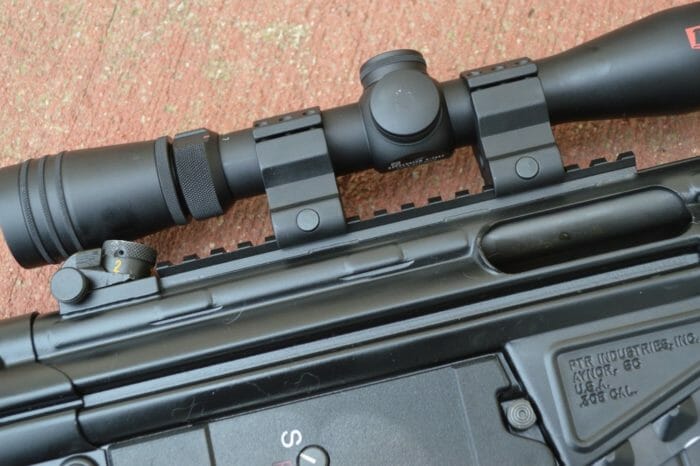

Range Report
One thing you frequently hear shooters say about the PTR-91 is that it is harsher on the shoulder than other .308 semi-automatics. To be totally honest, I think this reputation is overblown. It’s not like we’re talking about a safari-caliber gun here. While recoil is ammunition dependent, the A3R is far more enjoyable than most bolt-action rifles and if competitors like the FAL and AR-10 are softer shooters, the difference is not large enough to embarrass the PTR. Most shooters should be able to run through several magazines without appreciable shoulder fatigue. Moreover, there are several ways to mitigate recoil in roller-locking rifles so you can easily tune the gun to fit your preferences.
PTR advertises the A3R’s barrel as “match grade”. As you might expect, defining “match grade” can be somewhat cloudy, so I usually put little stock into the term. With that in mind, the A3R still does not disappoint. I’ve found that the rifle’s performance varies considerably depending on ammunition, but with its current favorite load, Prvi Partisan 147 grain FMJs, I have negotiated 1 MOA groups (shown below). Most of my groups with Prvi land in the 2 to 2.5 MOA range. For me, the biggest limitation is the PTR’s mediocre-to-poor trigger. On the other end of the spectrum, the A3R seems to strongly dislike ZQI’s M80 loads as I’ve struggled to beat 3.5 MOA with it.
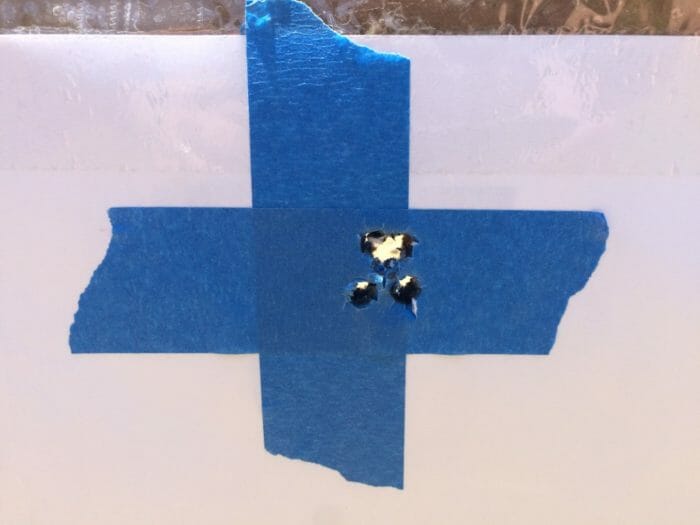

Since part of the reason I purchased the PTR-91 was to use it as a suppressor host, it is worth mentioning that the rifle required some tuning in order to reliably function with a can. As you might expect, the added backpressure from suppressors noticeably increases the rifle’s bolt speed. The quicker, harsher recoil stroke was especially noticeable in my PTR. I also found that the rifle consistently tried to feed two rounds with a silencer mounted. This is unsurprising though as most roller locked firearms are backpressure-sensitive. In order to rectify the issue, I purchased a Rim Country Manufacturing #17 locking piece from HKParts and swapped out the standard part. Because the #17 piece has slightly different geometry, it helps to keep the action closed longer under pressure and slows down the bolt on opening. If you’re planning to suppress the PTR-91, you’ll definitely want to pick up a different locking piece.
The A3R leaves quite a bit to be desired when it comes to ergonomics. While the wide forearm is much more comfortable to handle than the slimline version, the rifle’s long receiver and lengthy stock make your support hand feel like a county away. That’s a slight exaggeration, but the rifle really doesn’t try to hide its large build. On the flip side, the Navy-style trigger housing is much more comfortable, but perhaps less aesthetically pleasing, than the old steel housings. With a charging handle far forward and on the left side of the rifle, the PTR is mostly a righties-only affair, but the Navy pistol grip is far more tolerable for southpaws than the contoured original design.
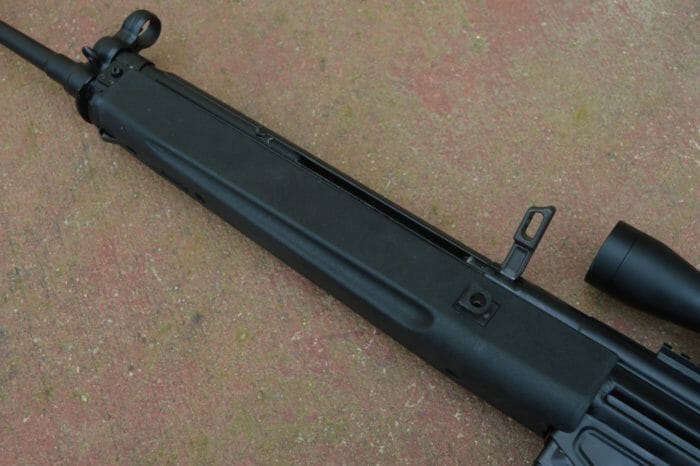

Conclusion
After spending several months with the PTR-91 A3R, I think you would be hard-pressed to find a better overall value in a semi-automatic .308 rifle. Sure, it has a poor trigger, unusual ergonomics and is heavy compared to other options, but it is also a proven design and incredibly well priced. PTR’s addition of the scope rail addresses one of the platform’s serious weaknesses and the paddle magazine release is such an improvement over the button that you almost have to have the rifle in hand to fully appreciate it. As an Atlantic Firearms exclusive offering, there is only one place you’ll find the A3R, but the folks there are great to work with and very responsive to any questions you might have. For less than $1,000, you really cannot go wrong with the PTR-91 A3R.
An information security professional by day and gun blogger by night, Nathan started his firearms journey at 16 years old as a collector of C&R rifles. These days, you’re likely to find him shooting something a bit more modern – and usually equipped with a suppressor – but his passion for firearms with military heritage has never waned. Over the last five years, Nathan has written about a variety of firearms topics, including Second Amendment politics and gun and gear reviews. When he isn’t shooting or writing, Nathan nerds out over computers, 3D printing, and Star Wars.

